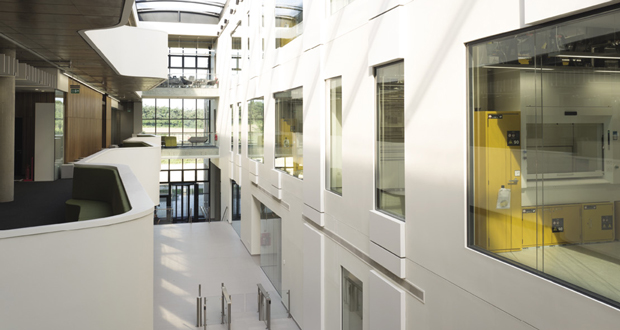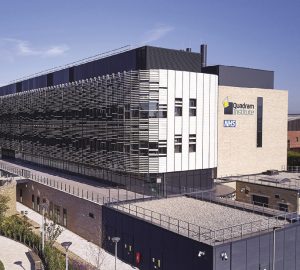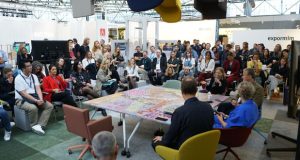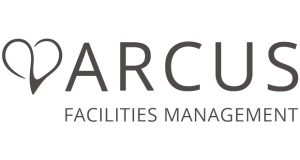ENERGY REDUCTION
Addressing energy use was another principal objective for the project, as a way to mitigate against the complex and energy-hungry areas, from clinical to bio-containment, which are typical for a project of this nature. From an energy point of view the biggest challenge was to design the heating, cooling and electrical systems for a single building with multiple requirements and standards.
As energy reduction was crucial to the design, the level of internal environmental control and analysis was carefully considered; opportunities to safely reduce the traditionally applied laboratory air change rates were an important element.
The air change rate is the biggest source of energy consumption in a healthcare environment; if the amount of air moving around the building is reduced, this changes how often it needs to be heated or cooled. This was particularly applicable in the laboratories – rather than the hospital – as HTM standards would inform the hospital’s design. In existing facilities, the use of 12 air changes per hour in laboratories was common. At the Quadram Institute, the team were able to reduce this to six air changes per hour, which enabled them to use the night set mode and thus override the system. This allows the system to be reduced to lower levels for scientists working at night.
Energy efficiency strategies were employed across the facility by considering the use of natural light. Large internal glazed openings promote connectivity between the research teams and those involved in patient care. All spaces are flooded with natural light and views through the building to the exterior, with wellness for users at the heart of the design. The intention is to connect building users directly with their environment while maintaining a level of comfort that supports the Quadram Institute’s best work.
MANAGING MAINTENANCE AND BEING FIT FOR THE FUTURE
In addition to monitoring energy levels, it was important for the client to create systems that would support the facilities team once the building was operational. With the pace of research evolving at an unprecedented rate, it was essential that the building services could adapt to future needs.
The Quadram Institute uses a single building management system, providing a consistent operational platform across each of the resident organisations. While each organisation has its own requirements for temperature levels and airflow in key spaces, the open-plan offices are set at a temperature to allow a good band of comfort. The laboratory systems operate over a variety of different time periods and temperatures. These can be manipulated by the facilities team or via user override switches to reduce the need to cool unoccupied spaces.
The laboratories are designed with exposed high-level services in the open-plan areas, allowing the use of fabric ducts for draft-free air distribution, easy maintenance and adaptability. This also creates a striking feature and an enhanced feeling of spaciousness. Spare capacity has been provided within the utility distribution, with distribution zones at regular intervals. This allows for system upgrading without major disruption to the installation and building operation.
The client’s need to respond quickly and innovatively to the latest user needs requires a flexible approach to delivering high-performance spaces, and an approach was identified early on to allow workspaces to be modified as teams changed and developed. Open-plan offices are easily configurable to accommodate different research groups due to a reduced number of cellular offices. Similarly, each laboratory can flex and adapt to accommodate a range of uses.
LOOKING AHEAD – TO A POST COVID-19 WORLD
Ground-breaking new research from the Quadram Institute is already making an impact within the community and benefitting wider society. This is exemplary of the huge potential that the Quadram Institute has in its new home. Bringing diverse disciplines together under one roof will undoubtedly foster collaboration, as well as contribute to major progress in the fight against diseases such as cancer and diabetes.
The groundwork has undoubtedly paid off, as scientists from the Quadram Institute have volunteered to join the flight against COVID-19 by working with staff at the NNUH to process thousands of COVID-19 tests – demonstrating how vital a resource it is to the UK’s healthcare service, as a catalyst for collaboration.
(i) www.burohappold.com
(ii) www.nbbj.com
(iii) https://quadram.ac.uk
(iv) www.norwichresearchpark.com/
(v) www.uea.ac.uk
(vi) www.nnuh.nhs.uk/departments/gastroenterology/






